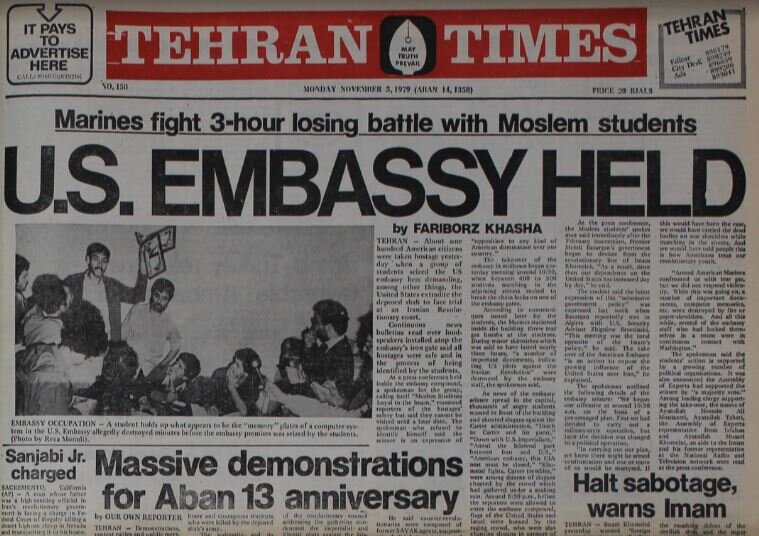Capturing a victory
Capturing a victory
TEHRAN – On November 4, 1979, Iranian students took control of the U.S. embassy in Tehran in what many saw as a critical act of justice and defiance against decades of U.S. interference.

The Tehran Times’ reporting over the days following the event provides a unique Iranian perspective on the incident, noting the event an empowering act of resistance against foreign interference.
With headlines like “U.S. Embassy Held” on November 5 and “Seizure Hailed” on November 6, the Tehran Times embraced the takeover as a powerful reclaiming of sovereignty from U.S. intervention, portraying the students as national heroes and emphasizing the widespread support of the Iranian public.
November 5: the people’s rejection of U.S. domination
On November 5, the Tehran Times ran its first major story on the embassy takeover, describing it as a deliberate act against U.S. influence.
The paper describes the initial hours of the takeover as a meticulously planned act of resistance. Far from an impulsive action, this was a well-thought-out strike against a foreign presence seen as a corrupting force on Iran’s soil.
The article amplifies the students’ demands, including the extradition of the Shah, whom they saw as a criminal shielded by the United States. The detailed recounting of the crowd’s defiant chants—“Death to Carter and his guest,” “Down with U.S. imperialism”—underscored a prevailing sentiment among Iranians that American influence had no place in their newly liberated country.
As described by the Tehran Times, the crowd burned American and Israeli flags, chanted slogans in solidarity with Palestinian liberation, and rained down fervent support for the Imam’s line, underscoring that this act of protest was part of a larger struggle against imperialism itself.
November 6: a national victory celebrated and defended
The tone of defiance only intensified in the November 6 article, titled “Seizure Hailed,” which described the presence of Seyed Ahmad Khomeini, the son of Ayatollah Khomeini, at the embassy.
The newspaper paints the moment as one charged with pride and national unity. Ahmad Khomeini’s arrival turned the takeover into a true celebration of Iranian dignity, a public endorsement of the students’ courage, and a rallying point for all Iranians united against a common enemy.
In an emphatic statement, Ahmad Khomeini declared, “This is not an occupation; in fact, we have thrown out the occupiers.” His words, published on the Tehran Times, reframed the embassy takeover as a heroic liberation of Iranian land from a foreign power that had long overstayed its welcome.
The article recounts how Ahmad Khomeini criticized America’s lingering influence over Iran, calling for the nationalization of all American industries in Iran and the dissolution of bilateral agreements that had served only to bind Iran’s hands. His words, quoted by the paper, reflect the broader Iranian desire to finally shed the last traces of American control and reclaim the country’s wealth, dignity, and independence.
The Tehran Times’ article conveys that while America had, for years, schemed to undermine the Iranian revolution, the tide had turned. With the embassy takeover, Iran had asserted its strength, making it clear that any further interference would be met with unwavering resistance.
Throughout both articles, the Tehran Times unites its readers around the belief that this act was an extension of the revolutionary spirit that had toppled the Shah—a way of securing the hard-won freedom that was now, finally, within reach. The students, acting in the name of the Iranian people, carried out the Imam’s vision of an Iran free from foreign dominance.
In the pages of the Tehran Times, the embassy takeover is more than news—it is a turning point, a historic moment when Iran stood tall, defying a superpower and signaling to its people that their nation’s sovereignty was unbreakable.
source: tehrantimes.com